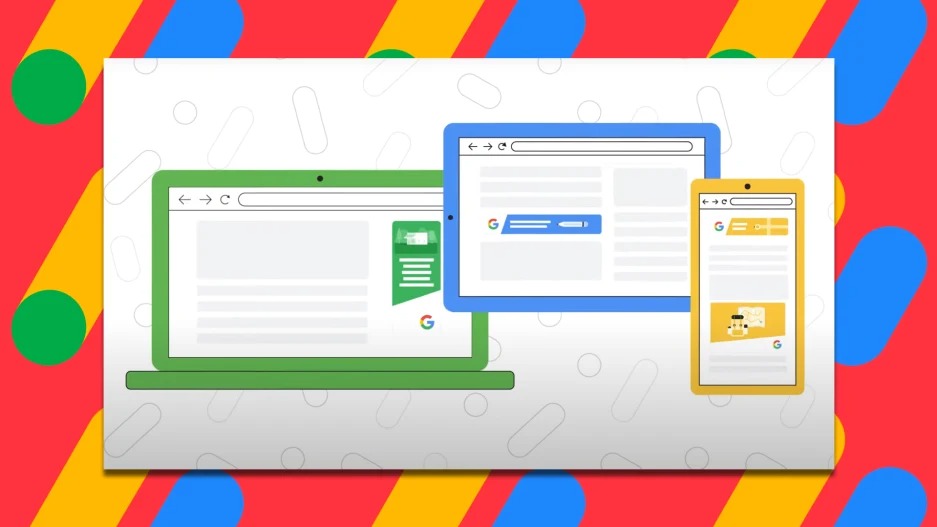- | 10:00 am
How 20 years of Google’s AdSense changed the internet
The targeted ad initiative was initially launched as “content targeting advertising” 20 years ago this month. The internet was never the same.

The pervasiveness of online advertising and its ability to pinpoint our habits and desires has been a point of contention ever since AT&T purchased the first banner ad on the internet in 1994. But while banner ads and the pop-ups that followed became a blight for users, it’s the current generation of advertising—those that follow us around the internet, hawking us products that it thinks we’ll like—that people find particularly troublesome. The reason those ads seem quite so creepy? AdSense, the Google-run tool that enables the owners of websites to display targeted advertising from clients who partner with the search giant, in exchange for a revenue sharing arrangement. It matches ads to content, based on the consumer’s interests. And it came into being 20 years ago this month.
Initially it was called “content targeting advertising,” though it was renamed AdSense just a few months later. At the time, the company boasted that “publishers that do not currently display online advertising can integrate Google’s targeted ads with minimal effort.” Once approved, they’d have “instant access to Google’s network of search advertisers—comprising more than 100,000 advertisers, ranging from large global brands to small and local businesses.”
It was a tool that “strengthens the long-term business viability of content creation on the web,” as Google cofounder Sergey Brin put it at the time.
It would overhaul the way the web worked—for good and evil.
A NECESSARY EVIL
AdSense changed our experience on the web forever; more than 58.5 million websites use it worldwide at present. Advertising is a $225 billion business annually for Google, which takes less than one-third of the revenue from ads booked through AdSense that are served against content. (The cut for ads against search is higher.) That’s despite around 4 in 10 web users utilizing some sort of ad blocker while they browse.
“Although AdSense was not the first online advertising network in the market . . . it democratized the ability to sell contextually relevant ad space and monetize the traffic of smaller websites,” says Alyeda Solis, founder of SEO consultancy Orainti, “which is something that at the time was easier to do for bigger, established, authoritative online publications.”
At the time of AdSense’s release, Solis was working as a web designer and developer, helping develop websites including travel blogs and online newspapers. Among the key questions her clients kept asking: How to fill the gap where ad banners don’t sell. “And all of a sudden, AdSense became the easiest way to do it,” she says.
The tool was in large part the work of Susan Wojcicki, who has had arguably as much impact on the tech giant’s success as its cofounders. “It’s well known that Google began in her garage, and that she was its first marketing manager,” says e-commerce and advertising expert Dan Barker. “It’s less publicly spoken about that she also headed Google’s ads products through their golden period, along with Google Analytics at the point basically the entire web relied on it. She was also to a large extent responsible for the acquisition of YouTube, as well as being its CEO for many years.”
AdSense marked a major change in how ads largely worked—and signified a change that would reverberate beyond Google alone. “Whereas Google Ads monetised search, AdSense was a way of monetising content itself,” says Barker. “YouTube ads basically descended from this, and the ads we see across Facebook and Instagram and Twitter, and most sites and platforms used across the entire world today, sort of flow on from this.”
Barker calls AdSense a trailblazer in bringing content advertising to the mass market. “It allowed creators to monetize their work, and advertisers to reach creators’ audiences, without any kind of tech knowledge,” he says. It was, in many ways, the kickstart to the creator economy, which now totals more than $100 billion. “AdSense incentivized the development of a new generation of topic blogs and forums, since all of a sudden, there was an easy to implement and relevant, user-friendly way to monetize them,” says Solis, the SEO consultant.
Which users it’s friendly for is up for debate. An increasing proportion of people now do all they can to avoid seeing adverts of any type online, installing browser extensions that prevent ads from displaying in their browser. For all the benefits that advertising has brought its clients, it has managed to bring many drawbacks to everyday browsers. The internet has become littered with ads, and is a worse place to be because of it. But even with that, and 20 years in, the AdSense era seems like it still has a way to run.








































